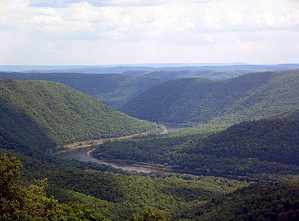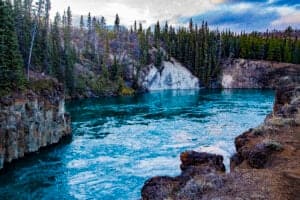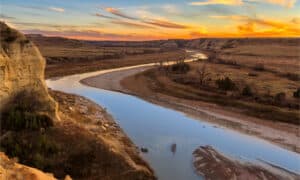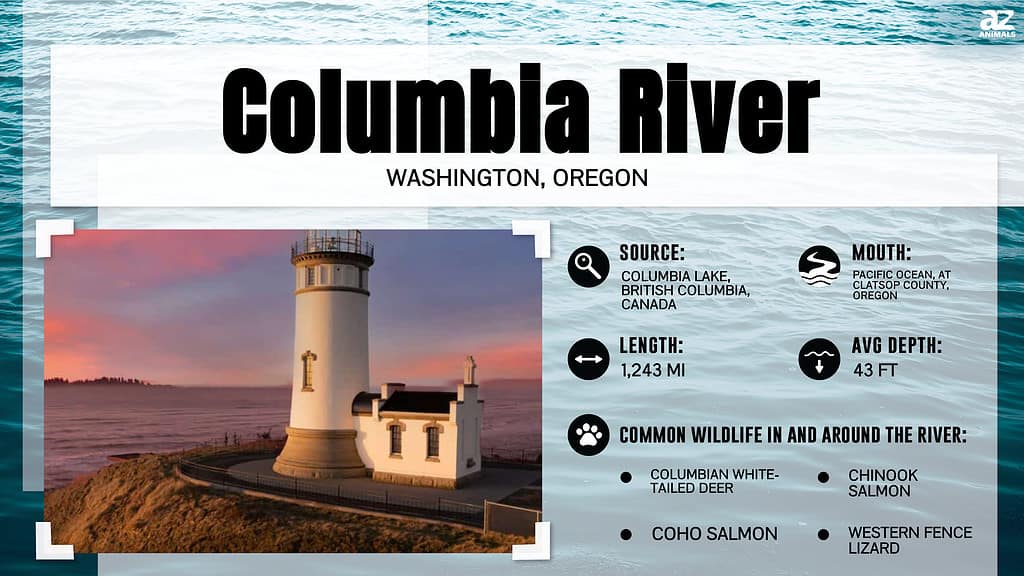
The Columbia River is the eighth-longest in the United States. It flows from British Columbia into the U.S., where it winds its way through Washington, forms a border between Washington and Oregon, and eventually reaches the Pacific Ocean. The river flows for about 1,243 miles, and many plants and animals thrive in and alongside the body of water. Discover what is in the Columbia River and whether it’s safe to swim in it!
Is It Safe to Swim in the Columbia River?
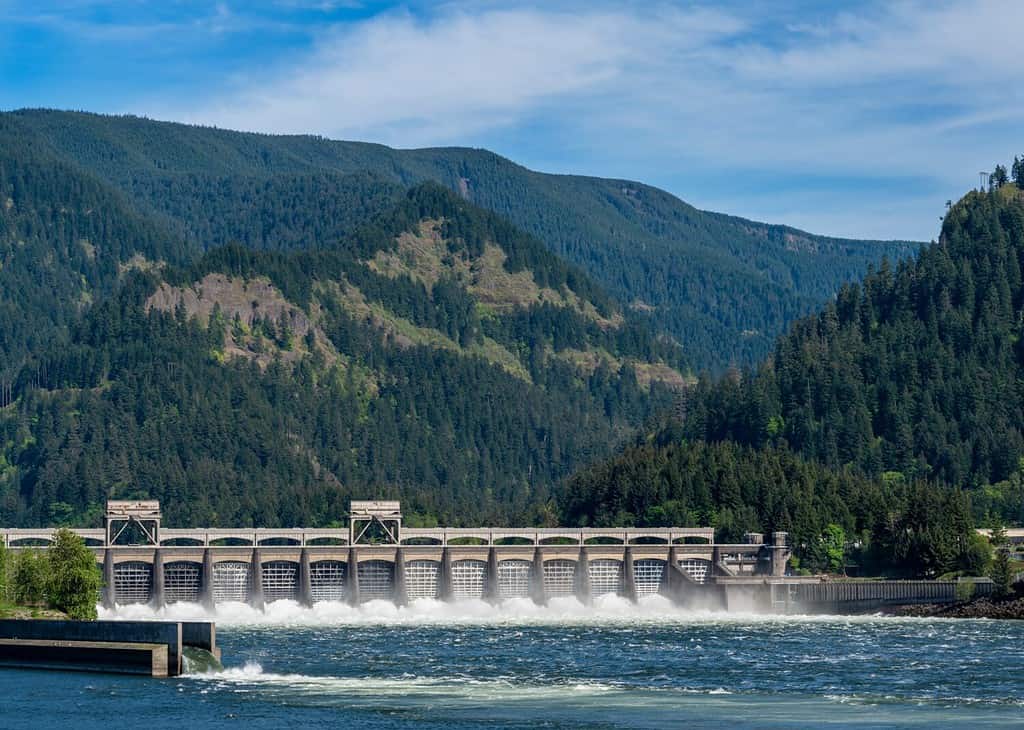
The Columbia River has many dams and places where the industry has made the water unsafe for swimming.
©J-B-C/Shutterstock.com
Yes, parts of the Columbia River are safe to swim in. However, bear in mind that the river is over 1,200 miles long. This winding body of water passes through several cities and wild areas.
That means some parts of the river are not safe to swim in because they are too remote, have too much pollution, and more. The best way to swim in this river is at a recreational area that has lifeguards or at least multiple swimmers.
If you wish to swim in the Columbia River, then follow this advice:
- Always examine the area before entering the water.
- Follow any posted advice in recreational areas.
- Stay close to the shoreline.
- Mind the currents.
- Never enter the water if you have open wounds.
- Wash off after swimming in the river.
Many parts of the river have fast-moving currents. Even experienced swimmers can find themselves at the mercy of the water if they enter the water at a place with a fast current.
Another problem that arises in parts of the Columbia River is pollution in the form of industrial discharge as well as waterborne bacteria. Some organizations post about the safety of the river’s water. That can provide would-be swimmers with some guidance on whether to enter the water at a certain location. However, this information is not always updated promptly.
Always research the area in which you’re trying to enter the Columbia River. You may discover that it’s not safe because of waterborne bacteria or that recent rain has altered the currents.
By following the right precautions, you can swim in the Columbia River.
Where is the Columbia River Located on a Map?
The Columbia River is a major body of water in the Pacific Northwest region of North America, spanning over 1,200 miles from its headwaters in British Columbia, Canada, to its mouth at the Pacific Ocean. The river flows through multiple states, including Washington and Oregon, before reaching the ocean. It also forms part of the border between Washington and Oregon for a portion of its length. The surrounding landscape includes both rugged mountains and rolling hills, with numerous dams along the river providing hydroelectric power as well as recreational opportunities such as fishing and boating. Additionally, several cities, including Portland and Vancouver, are situated along the banks of the Columbia River. Overall, this iconic river serves as an important transportation route for goods and people while also playing a significant role in regional history and culture.
What Dangerous Animals Live Near the Columbia River?
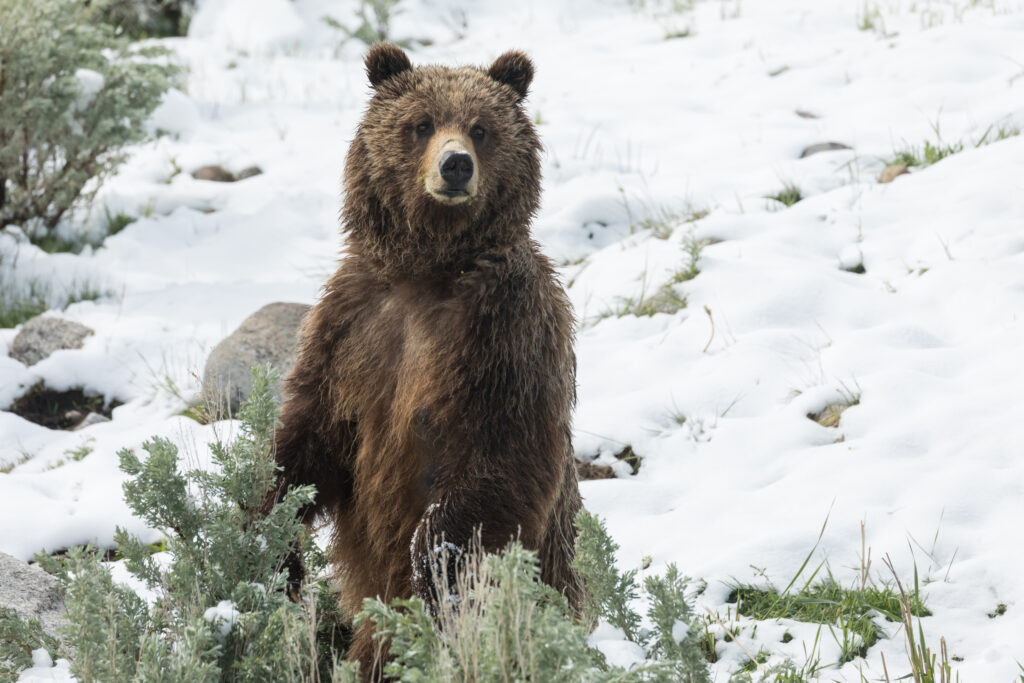
Grizzly bears are some of the most dangerous animals in the United States.
©Kelp Grizzly Photography/Shutterstock.com
The Columbia River slinks through Washington and the northern border of Oregon. Following the river will bring people into close contact with a lot of different animals.
While some of them are interesting to watch, like salmon, others are not the kind of critters you’ll want to run into. Few animals that are dangerous to people live in the river. Still, some very large fish occupy these waters.
Since you don’t have to worry about what animals are in the Columbia River, you should still take a look at the animals around it. Learn about what dangerous creatures you may encounter when you’re swimming in or hiking around the river.
1. Cougars
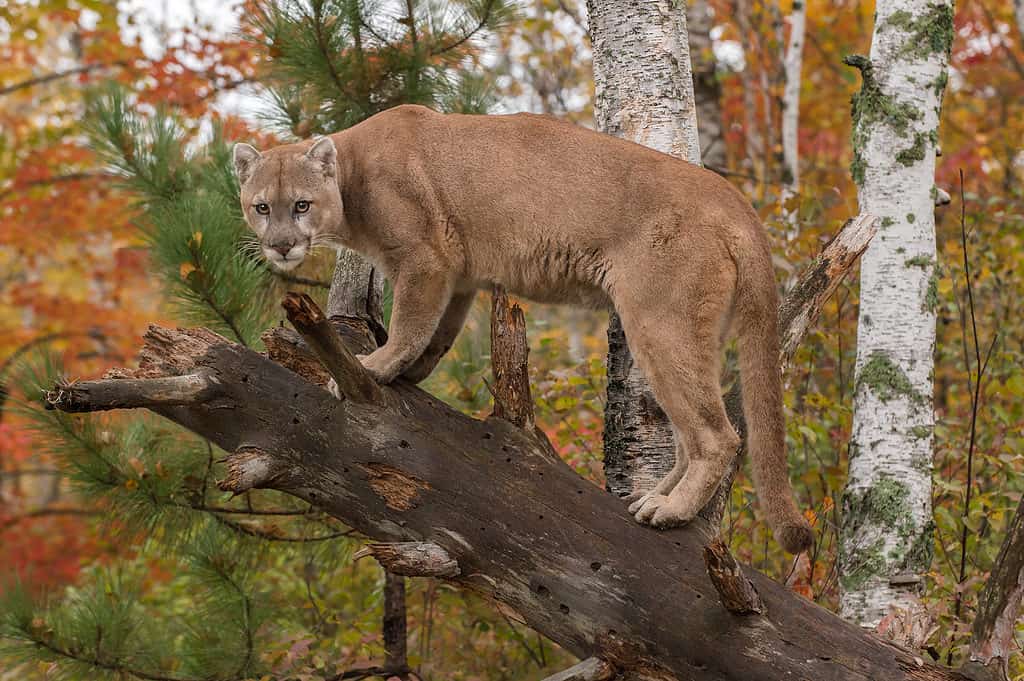
Mountain lions
are often unseen until they strike.
©Geoffrey Kuchera/Shutterstock.com
Cougars are also called mountain lions or pumas. No matter what they’re called, these mammals are dangerous. These creatures like to stalk their prey before pouncing and taking them down.
While mountain lion attacks and fatalities are rare, they’re still a possibility. However, these animals are not stalking the entire length of the river. Research the part of the river to which you’re traveling and make sure to practice good mountain lion safety.
2. Bears
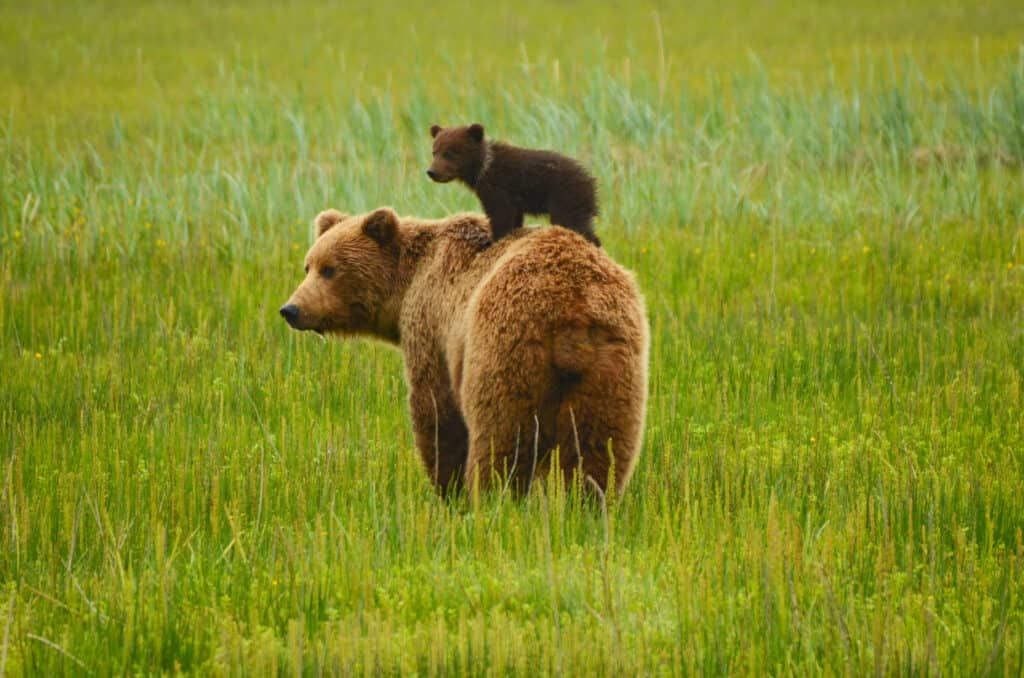
Mother bears need to teach cubs to climb
©David Rasmus/Shutterstock.com
Black bears and brown bears are found at various places along the length of the Columbia River. Both animals can unleash a fatal attack on a human being. These animals are very swift despite weighing several hundred pounds. Their bites and claws are deadly.
Bears are found around the river, and sometimes in the river when they are feeding on fish, like salmon. Try to stay near places on the river where bears aren’t common. Knowing how to safely camp or fend off a bear attack in places where bears live is imperative before planning a trip.
3. Western Rattlesnakes
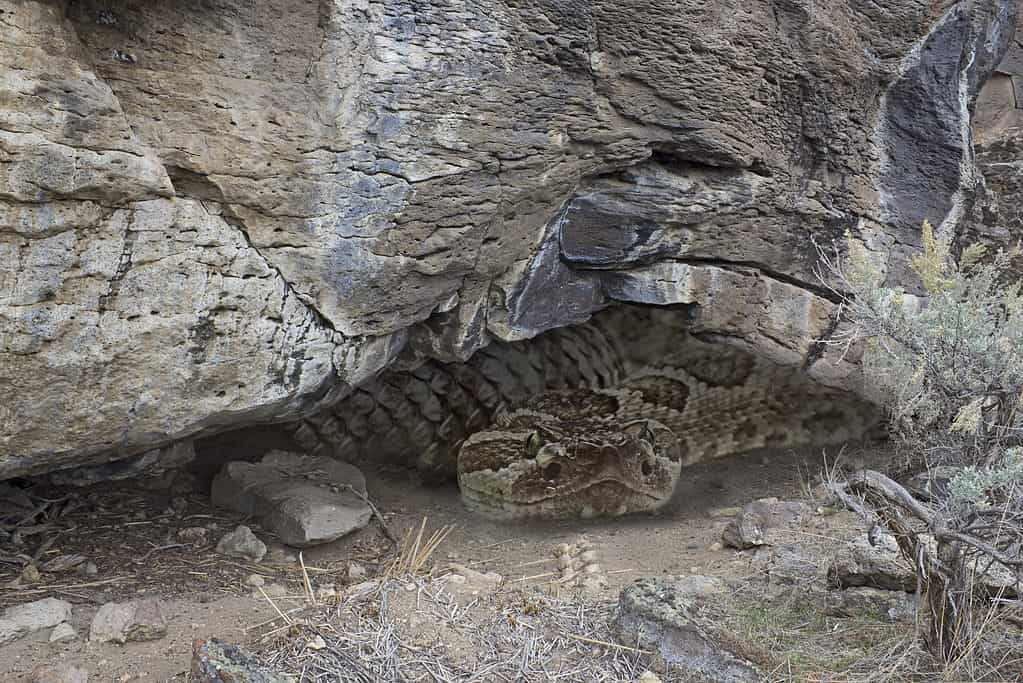
Most rattlesnakes brumate for at least a little bit of the year, and the further north they live, the longer they have to brumate.
©Ginger Livingston Sanders/Shutterstock.com
Western rattlesnakes are found throughout the Columbia Basin. Like other rattlesnakes, the western rattlesnake is a venomous snake that has a potentially deadly bite. Some people mistake these snakes for gopher snakes. As with any potentially dangerous animals, it’s best to leave these snakes alone.
They’re far less likely to strike someone that is aware of their surroundings and is not actively harassing them. If you do encounter one of these snakes, the best thing to do is slowly, carefully back away.
4. Coyotes
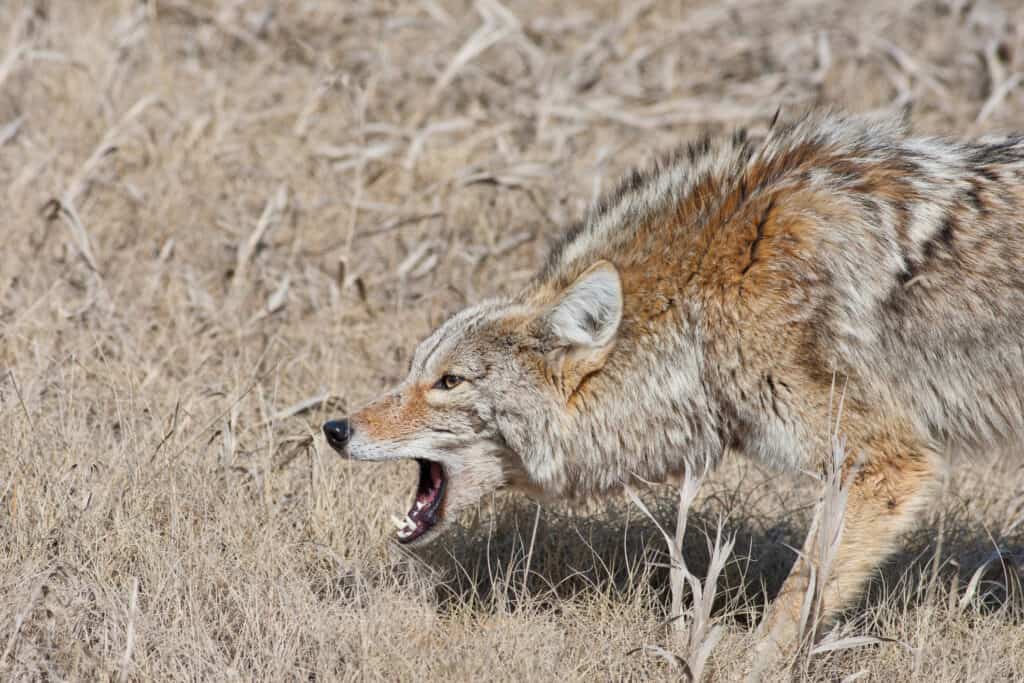
What do you do to survive if a coyote attacks? Learn how to stay safe from rabid coyotes before heading out on your next nature walk.
©iStock.com/Songbird839
Roughly 50,000 coyotes live throughout Washington State, and even more of them live in Oregon. These animals are somewhat common in the Columbia River Gorge region, and they can pose a threat to people. Coyote attacks on people are uncommon.
They’re more likely to attack children and pets than grown adults, and they rarely bother people in a group. Before camping in places where they’re common, learn how to dissuade coyotes from coming close to you. It’s also a good idea to learn how to survive a coyote attack if one does become aggressive.
5. Elk
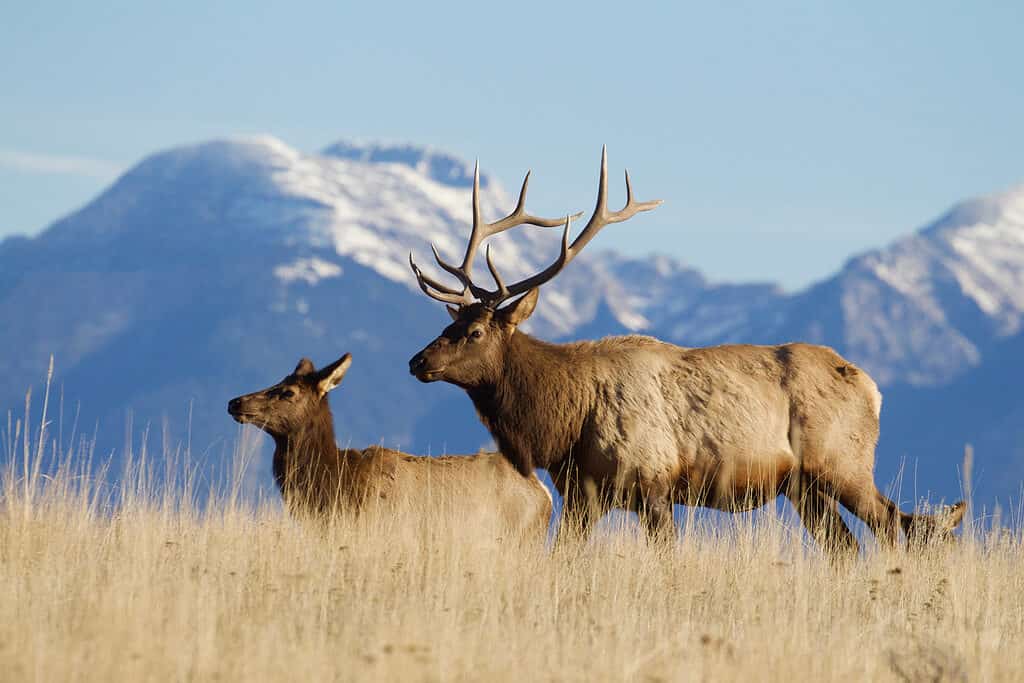
The average elk weighs more than three times the average person.
©Tom Reichner/Shutterstock.com
Elk are massive creatures with enormous potential to ruin a person’s day. They can grow upwards of 5 feet 4 inches tall and weigh 1,200 pounds! The animals are frequently found near the river, and sometimes they swim across portions of it. If you get too close to one of these animals, they can be very defensive. The last thing you want to deal with is a frustrated, charging elk. Steer clear of them and maintain a safe distance on your journeys near the river.
Most people only need to think of pollution and bacteria when worrying about what’s in the Columbia River and whether it’s safe to swim in it. However, the wildlife that surrounds this 1,234-mile river can be dangerous. Always take the proper precautions before setting out on an adventure around this region. Try to stay near popular swimming and recreation areas along the river to stay safe.
The photo featured at the top of this post is © iStock.com/Sharla Libera
Thank you for reading! Have some feedback for us? Contact the AZ Animals editorial team.



